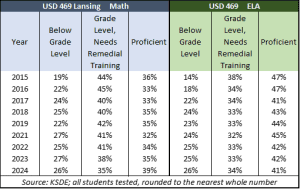Unbeknownst to many, Kansas water rights are controlled by one unelected employee of the state Department of Agriculture.
That person — David Barfield, hired by the secretary of agriculture — is the soon-to-retire chief engineer of the Kansas Division of Water Resources.
For some time, he has been at loggerheads with central Kansas farmers in a dispute between the federal Quivira National Wildlife Refuge over how much water is needed by the refuge to maintain the wetlands, and yet make sure the producers who feed much of the world can continue to grow their crops.
Most people would think that farmers own the water under their land much as they would own minerals under it.
Leah Chadd is one of those farmers. Her family has owned land near the refuge for more than 40 years. According to her, farmers don’t control the water beneath their land.
“Now, when a person purchases a piece of land and wants to irrigate, he would need to make an application with KDWR for a well,” she said. “Once approved, he would have a couple of years to prove the need and the quantity of water needed.
“The term for this process is ‘perfecting his water right.’ Then the Division of Water Resources will give you an appropriation for your quantity with your water right file number. You are regulated by the Chief Engineer. You have to report regularly your water use by the required meter at your well. You file this with this water right. If you use more than your right, you are subject to heavy penalty.”
The problem for farmers, according to Chadd, is two-fold. First people with lower water rights numbers have priority over people with higher numbers. In the case of Rattlesnake Creek near the refuge, the wetlands has priority over many of the irrigation wells in the area. This wouldn’t be a problem, but for the second issue.
Chadd said that in the mid-1980s, the DWR over-appropriated the basin, there was a contract signed by the landowner that if the stream does not flow, then the highest water right numbers will be restricted in their use. But the restrictions proposed by Barfield would cut some wells — and therefore irrigation — by as much as 50 percent, which would effectively put some farmers out of business.
As of October 25, 2019, the U.S. Department of the Interior, which manages Quivira, is not asking the state for more water while a solution is sought between the various stakeholders — in part because of interest taken on the part of Kansas Senator Jerry Moran.
“In my meeting with Aurelia Skipwith, then-nominee to be Director of the Fish & Wildlife Service (FWS), I explained the need for farmers and ranchers to be able to utilize groundwater in the basin and the importance of agriculture to the regional economy,” said Sen. Moran. “Director Skipwith agreed to work with local stakeholders to find a voluntary solution to satisfy the Quivira water impairment, preventing the Kansas Department of Agriculture (KDA) from moving forward with an administrative order to regulate junior water rights. I have continued to engage both FWS and local stakeholders in discussions on finding common-sense solutions to resolve this issue that threatens to harm Kansas producers and the regional economy.”
Chadd and her neighbors, however, have a solution to prevent one bureaucrat from can conceivably shutting down their livelihoods.
“The Chief Engineer (Water Czar) is an unelected official who has too much power without a check and balance system,” she said. “We think by having a board of three individuals with an agricultural background and an engineering degree making these monumental decisions would be more fair. (We think) more than one making the decisions and more minds working on a project makes more sense.”



